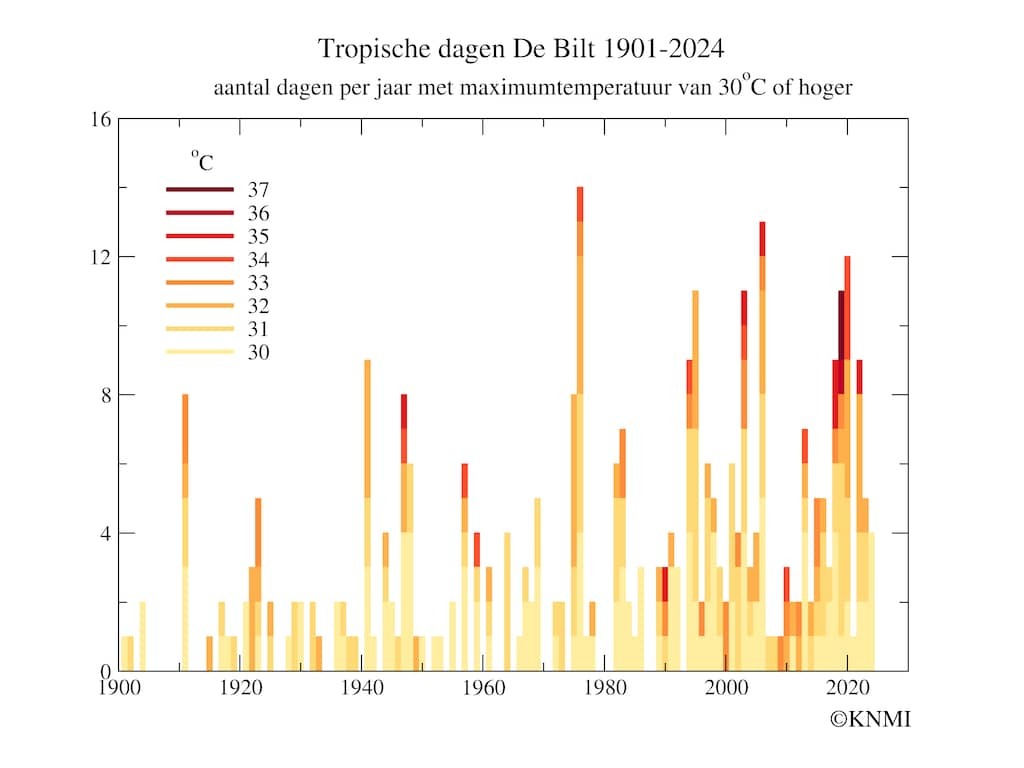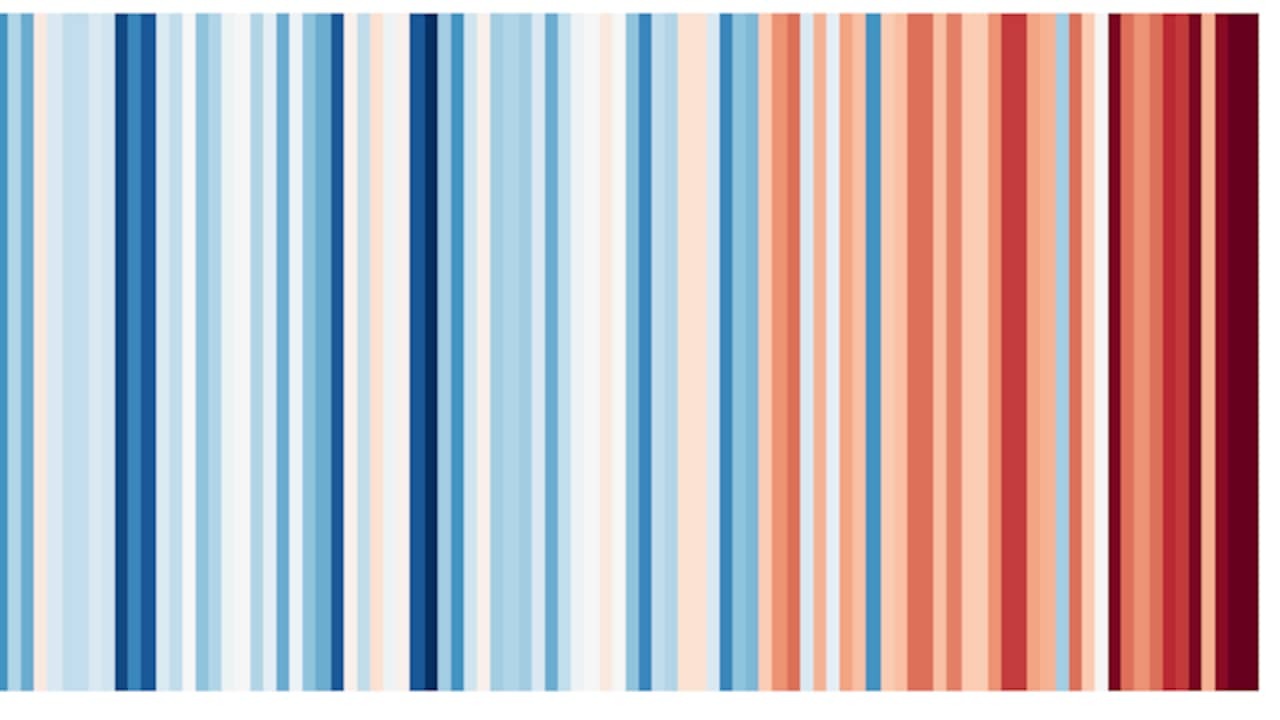
With temperatures above 30 degrees, it’s tropically hot these days. Readers say in the NUjij reactions that this kind of heat also occurred in the past. That is true in itself, experts say. “But it is more often warm than before, and it is also hotter.”
One warm day of more than 30 degrees is not so special. “Those have been around before,” says Weerplaza meteorologist Matthijs van der Linden to NU.nl. “In that sense, it’s not very exceptional.” He wouldn’t be surprised even by 38 degrees. “That used to be really rare, but now it’s a bit more normal.”
It does matter how far you go back in time, says climate expert Peter Siegmund of the KNMI, which has been keeping track of the temperature for over a hundred years.
Meteorologists speak of an extremely warm day at 35 degrees or more. In De Bilt, that only happened twice in the last century, while there have already been eight such days this century.
“You see that there are also more tropical days in the last thirty years, and that these are also often warmer,” says Siegmund about the graph below. On a tropical day, the mercury rises to 30 degrees or more.

Temperature on record day higher
If it is warmer on average, the peaks will also be higher. Siegmund cites a study that the KNMI conducted on June 13. With 31 degrees in De Bilt, that day is considered the first tropical day of this year. “If the Netherlands warms up on average by another 3 degrees, it could be up to 6 degrees warmer on a day like today,” the KNMI wrote then.
The Netherlands warms up on average by 0.4 degrees every ten years, but in the case of the hottest day that is double. “That rises about 0.8 degrees every ten years.” In 2019 it was 40 degrees for the first time in the Netherlands, and the chance that this will happen again is slightly greater every year.
It gets a bit warmer on average every year in the Netherlands. In the video below you can see the average annual temperature that the KNMI has measured in De Bilt from 1901 to 2024 increase. The temperature on the extremely hot days is therefore increasing even faster.
 0:13
0:13
KNMI climate barcode 2024
More heat waves
The KNMI also keeps track of the number of national heat waves. For a national heat wave, it must be at least 25 degrees or warmer in De Bilt for at least five days, and it must be 30 degrees or warmer on three of those days. “We’re probably going to get one of those now.” Just like the number of extremely warm days, the number of heat waves is also increasing.
“We have had thirty national heat waves since 1901. Sixteen of them were in the last century,” says Siegmund. “If you convert that, it means that the chance of a heat wave is now three to four times as great as it was then.”
“Especially in the summer, we can more easily get longer dry periods,” Van der Linden adds. Climate change disrupts the air flow that often brings cooling from the west. In addition, the chance of southerly wind increases in the summer, which causes warm air from the Sahara to blow our way. “With a southern flow it becomes easier to get warm.”
Of course, there used to be southerly wind in the summer, but the situation has changed in recent years. Due to climate change, the extremes are getting bigger. Dry areas become drier and wet areas become wetter. If warm air passes over a wet area, evaporation provides some cooling.
But it has become drier between the Sahara and the Netherlands. “The drier it is, the warmer it can get,” says Van der Linden. “The summer season is also being stretched a bit in terms of heat.” For example, heat waves can occur from spring to the month of September.
It’s getting even hotter
As long as the amount of CO2 in the atmosphere increases, the earth becomes warmer. And CO2 emissions are still increasing. However, the rate at which emissions rise is decreasing according to Siegmund.
Now there are an average of five tropical days per year in De Bilt. And this year the KNMI already counted four. If greenhouse gas emissions continue to increase sharply, there could be thirty in 2100. If the warming of the earth is greatly reduced, the KNMI still expects an average of eight tropical days per year at the end of the century. The world is currently heading for a scenario that is somewhere in between.
When the mercury drops again in the Netherlands on Thursday, the warming of the earth will continue. “We have no reason to assume that that would decrease,” Van der Linden concludes.